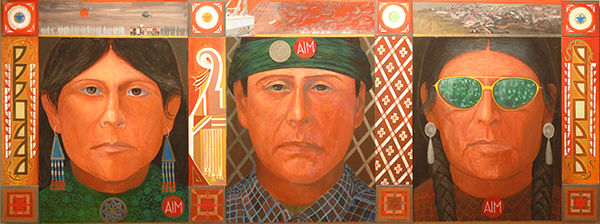
Jack Wolfe
Native American Paintings
Jack Wolfe's interest in and affinity toward Native American communities and cultures began in childhood, when he and his sister spent summers in the Lake Tahoe area, often visiting a Washo community where they played with other children and listened to stories. Jack’s concern with the historical and contemporary oppression of Native Americans by the United States, including acts of genocide and cultural genocide (e.g., forced assimilation; proscriptions on use of languages and cultural practices; adoption of abducted or removed Native American children into white families – a practice that persisted through much of the 20th century), the breaking of federal treaties, and exploitation of Native American land, among other acts of overt and structural violence, persisted throughout his life.
Through the 1970's and 1980's, he painted a series of large portraits of Native Americans. Each of them, measuring approximately 72” x 72,” presents a contemporary Native American making direct eye contact with the viewer. As with other political works, one of Jack’s primary goals was to create an emotional and aesthetic experience that would move viewers toward recognition of the oppression inflicted by their dominant culture. His hope was to promote greater compassion, connection, and respect among dominant group members for Native American individuals and communities in their defense of their human rights.